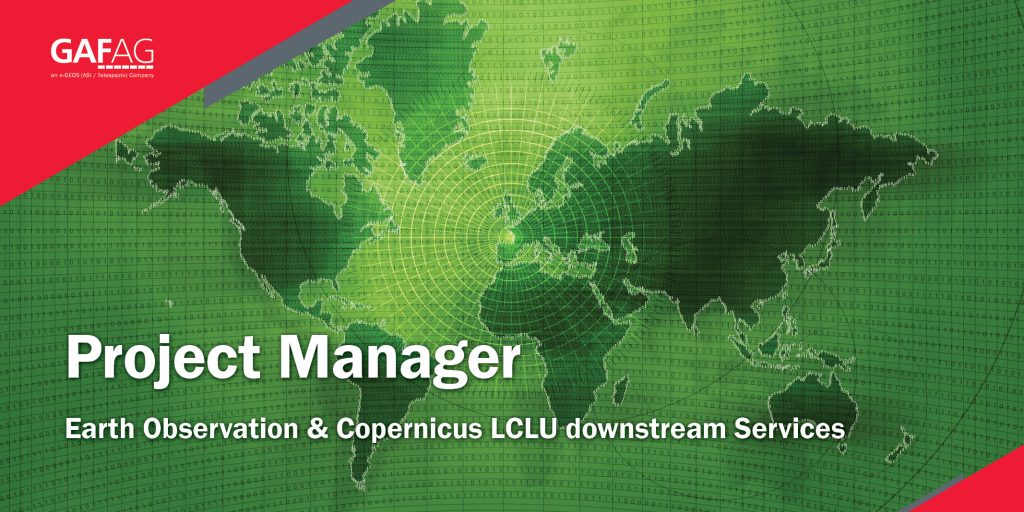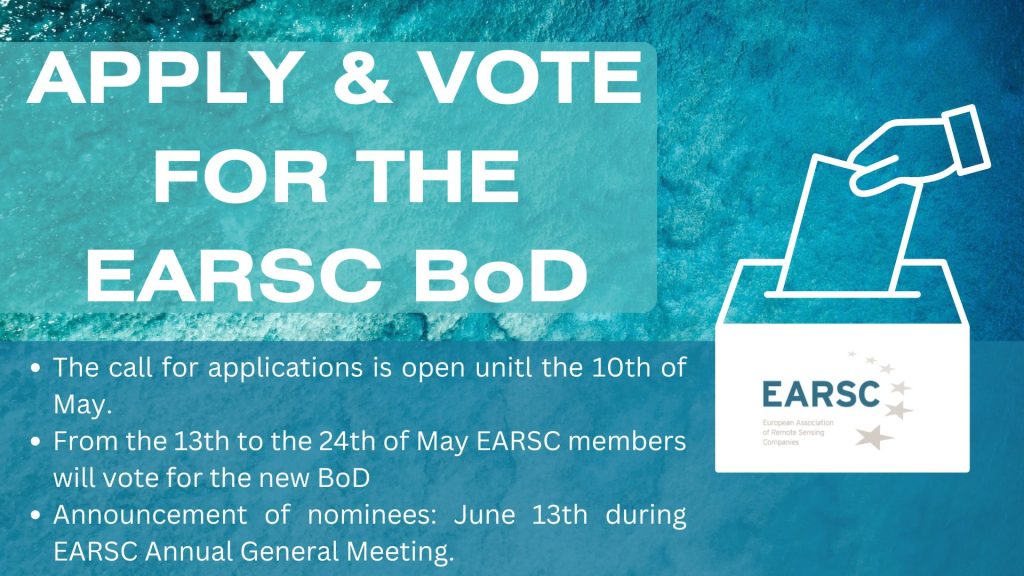
The voice of the Earth Observation
Industry
Barents bloom, Sentinel-2A - processed by ESA, CC BY-SA 3.0 IGO

Discover the largest European
Earth Observation Network
Lake Balkhash, Kazakhastan, Sentinel 2 - processed by ESA, CC BY-SA 3.0 IGO

EARSC promotes the understanding
of our Planet for societal benefits
Brussels, Spot 5 Sqtellite - Airbus Defence and Space
EARSC 4 Pillars
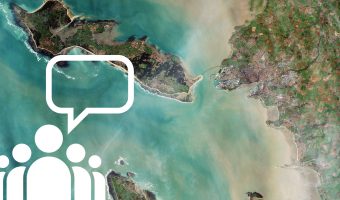
Representing the Members
The core pillar of our activities is to support and promote our members. We achieve this goal mainly through projects which we undertake (see projects). Members’ views are gathered through a series of ad-hoc working groups dedicated to important topics. We inform our members through a monthly report and a dedicated portal about important news and information, as announced bid opportunities – and dedicated e-mails for key items.
Read More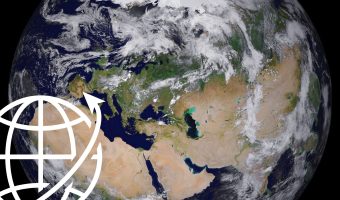
Market development & Internationalization
EARSC is engaged in a wide range of activities to develop new markets and business opportunities for our members. Our strategy is to engage users, identify needs and stimulate demand for European EO services both in Europe and abroad with complementary commercial and geographical approaches.
Read More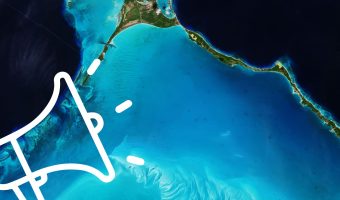
Promoting the industry
EARSC employs a range of sophisticated digital tools to promote the European EO sector. EARSC has three main digital tools which cover creating a shared vocabulary (EARSC TAXONOMY) , providing a common space to find EO companies, and a common space to discover ‘online’ EO services.
Read More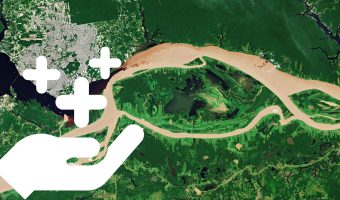
Showing the value of Earth Observation
The Earth observation sector delivers a wide range of social and environmental and economic benefits to citizens of Europe and the world. To properly and consistently value these impacts, EARSC leads the Sentinel Benefits Study (SeBS) project in which we measure the total societal impact of products and services coming from Sentinel satellite data.
Read MoreEARSC NEWS
Global Seeps covers NELP VII offshore exploration blocks
Infoterra to attend NELP VII road shows
GMES Segment One will kick off key year for European space
The European Space Agency expects to achieve significant progress with its most important programmes in 2008, says director general Jean-Jacques Dordain, beginning with a key milestone for the Global Monitoring for Environment and Security (GMES) programme. GMES is a European Union-led initiative to combine ground- and space-based observation for monitoring for the environment and security
Space gears up for climate change study
A record 17 satellites are to be launched in 2008 in the largest-ever concerted global effort to monitor the impact of climate change over the next few decades, according to the World Meteorological Organisation (WMO), which is leading the initiative.
Defra and Infoterra work together on Google’s innovative UK Carbon Footprint Project
Infoterra Ltd, a leader in the provision of geospatial products and services, has supplied the Department for Environment, Food and Rural Affairs (Defra) with core geospatial information, including climate change, carbon emission and waste recycling data, that features in Google’s innovative UK Carbon Footprint Project.
Isro plans satellite series for mapping, climate monitoring
The satellites will be placed in the so-called low earth orbit or around 700km above the earth’s surface by the Indian Space Research Organisation
The Integrated Applications Promotion (IAP) Initiative
The aim of this initiative is to promote the development of Integrated Applications using a combination of space capabilities and delivering new services to citizens.
ATK to buy Canadian satellite business from MDA
MacDonald, Dettwiler and Associates (MDA) is to sell its space business – manufacturer of Canada’s Earth-observation Radarsat and Canadarm robotic arm, to US firm Alliant Techsystems (ATK). Minneapolis-based ATK has agreed to buy Vancouver-based MDA’s information systems and geospatial services businesses, including the satellite and robotics activities, for $1.33 billion in cash. The acquisition, with
Better flow of satellite data for better management of environmental and security crises
Natural and manmade catastrophes in Europe, America, Asia and Africa, coupled with increased security needs, have further reinforced the need for earth observation systems. The GMES (Global Monitoring for Environment and Security) ensures that crisis situations like floods, forest fires or earthquakes can be better anticipated and managed through monitoring the state of our environment. To supply space data in a seamless, integrated, timely and secure way to the GMES users the European Commission and the European Space Agency (ESA) have signed a 48 million € grant for a coordinated provision of space-based observation data for GMES for its pre-operational phase 2008-2010. This new coherent and cost-efficient approach prefigures an operational service that will offer a comprehensive and sustained supply of space-based earth observation data.
ESA and EC take major step forward in GMES
ESA and the European Commission have signed a €48 million grant that will allow the space agency to ensure the coordinated and timely supply of satellite-based Earth Observation data for the preoperational phase of GMES from 2008 to 2010. The signing of the grant marks the first real cooperation between the two in the GMES
Resolution Marking Anniversary of Landsat
(Washington, DC) Today U.S. Rep. Mark Udall (D-CO), Chairman of the House Committee on Science and Technology’s Subcommittee on Space and Aeronautics, introduced a bipartisan House resolution to celebrate 35 years of space-based observations of the Earth by Landsat spacecraft – an accomplishment that has helped revolutionize our understanding of the Earth’s land surface as
OGC Announces Another Membership Category – Aggregate Membership Serves Collaborating Entities
The Open Geospatial Consortium (OGC®) announces a new category of membership, Aggregate Membership. It enables collaborating entities to bring their common issues and perspectives into the OGC process of developing interoperability standards. For example, state or provincial and local government agencies collaborate so that emergency response plans are fully coordinated. In this process, they identify
Canadian Earth-Watching Satellite Finally Reaches Orbit
Canada’s Radarsat-2 Earth observation satellite, which has been almost a decade in design and construction, launched successfully Friday aboard a Russian Soyuz-Fregat rocket from Russia’s Baikonur Cosmodrome in Kazakhstan, according to launch-services provider Starsem S.A. of France. The 4,850-pound (2,200-kilogram) Radarsat-2 is expected to operate for seven years in a 495-mile (798-kilometer), sun-synchronous low Earth
MEMBERS NEWS


